In this post, we’ll list some common plumbing terms and define what they mean. By studying these plumbing terms, you will be able to get a better understanding of what plumbers are talking about when they say certain things.
Plumbing Terms to Know
ABS – Acrylonitrile Butadiene Styrene, a black plastic pipe used for drain, waste, and vent lines.
Air admittance valve – a device used to control the flow of air into plumbing systems. It eliminates the need for an additional vent pipe.
Air gap – the unobstructed vertical space between the outlet of a water supply fixture and the flood level rim of a receptor.
Anode rod – a sacrificial metal rod that is installed in a water heater to help prevent corrosion of the tank.
Aqueduct – a conduit used to convey water.
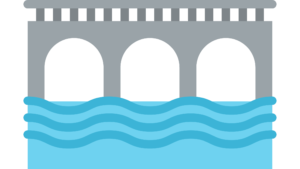
Baffle – a device installed in a grease interceptor or oil/water separator to disrupt the flow of incoming wastewater and promote the separation of FOG from sewage.
Backflow – any undesirable reversal of flow in a piping system.
Backflow preventer – a device that is used to prevent water or gas from flowing in the wrong direction and mixing with another substance.
Back siphonage – a problem that occurs when water or gas is siphoned through a plumbing system and ends up flowing backward. It can be caused by a combination of factors, including the use of too much water pressure or an open drain.
Backwater valve – a backwater valve is a device that is installed in the sewer line to prevent sewage and wastewater from backing up into the home.
Ball check valve – a type of valve that is used in plumbing systems to prevent the flow of gas or liquid back into a pipe. It uses a ball or other type of round object to seal the line.
Baseboard heater – a type of convection heater consisting of copper or aluminum tubing mounted on the wall near the floor, with fins attached to increase heat transfer.
Bidet – a plumbing fixture used for hygiene purposes, similar to a toilet.
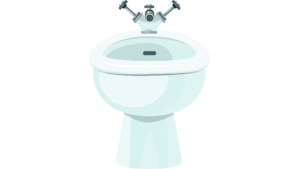
Boiler – a closed vessel in which water is heated by combustion or other means and circulated, either as hot water or as steam, for heating or power.
Branch circuit – the wiring between the final overcurrent device protecting the circuit and the outlet(s).
British Thermal Unit (BTU) – the British thermal unit is a measurement of heat energy. It is often used to measure the efficiency of water heaters and other appliances.
Building drain – that part of the lowest piping of a drainage system that receives the discharge from soil, waste, and other drains inside the walls of the building and conveys it to the building sewer, beginning six inches (152 mm) outside the inner face of the wall.
Building sewer – the extension from the building drain to the public sewer or other points of disposal.
Cast iron pipe – a type of pipe that is made out of a durable material known as cast iron. It is used to carry drinking water and other liquid or gas supply lines.
Catch basin – a dry well that collects stormwater runoff and prevents flooding.
Check valve – a check valve is a device that allows fluid to flow in one direction only. It is often used in plumbing systems to prevent backflow.
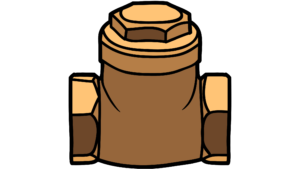
CLF – Continuous Linear Feet (the total number of feet in a single unbroken run).
Closet bend – a part of a plumbing system that angles between two vertical sections. It is used to connect two types of pipes and protect them from being damaged by the bends.
Closet Flange – the closet flange is the part of the toilet that connects the bowl to the drain pipe. It also helps to seal the connection and keep sewer gases from escaping.
Concrete slab – a type of foundation consisting of a concrete slab poured directly on the ground.
Condensation – the change of water vapor to liquid water.
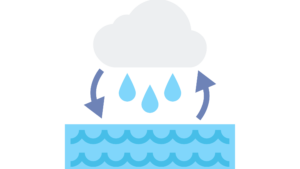
Conduit – a tube or duct used to protect and route electrical wiring.
Conway unit – a unit of measure for the discharge capacity of a drain, equal to 1 cubic foot per second (28.3 L/s).
CPVC – Chlorinated Polyvinyl Chloride, a type of plastic pipe used for hot and cold water lines.
Cross-connection – Any physical connection between a public water supply and a non-potable substance that could result in contamination of the public water supply.
DDCU – Drainage Double Check Valve Unit, a backflow preventer used to protect against back-siphonage and backpressure.
Dead end – the end of piping where no further flow can occur.
Demister – a device used to remove droplets of water from a gas stream.
Double-check valve – a type of backflow preventer that consists of two independently acting check valves.
Downspout – a vertical pipe used to convey rainwater from a gutter to the ground or storm sewer.
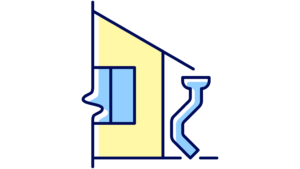
Drains – plumbing fixtures and appurtenances, including traps, for conveying wastes from building fixtures to the house sewer.
DWV – Drain-Waste-Vent, the piping system that removes sewage and wastewater from a home.
Effluent – sewage or other liquid waste that is discharged into the environment.
Elbow – a fitting used to change the direction of flow in piping, usually at an angle of 90° or 45°.
Escutcheon – a decorative plate installed around the point where a pipe enters a wall.
Excess air – air in a plumbing system that is not supposed to be there. It can cause problems with the flow of water, such as changes in temperature or pressure.
Faucet – a faucet is a plumbing fixture that controls the flow of water by turning a knob or lever. It is often used in kitchens and bathrooms to wash hands or dishes.
Faucet aerator – a faucet aerator is a small device that attaches to the end of a faucet. It helps to conserve water by mixing air with the water stream.
Fixture – a general term for any plumbing device that uses water, including lavatories, sinks, tubs and showers.
Flange – a flange is a ring-shaped device that connects pipes or other components to each other. It can also be used to connect various pipes together, such as the drain pipe and the vent pipe.
Flapper – the flapper is a solid rubber disk that can be found inside the toilet tank. It controls the level of water in the tank by either opening and closing or by lifting up or down, depending on its design.
Float ball – a round ball that is attached to a lever or rod and used in some types of plumbing fixtures, such as toilets. It is held in place by water and rises or falls as the water level changes.
Floor drain – a drain located on the floor of a room, used to remove water that has accumulated on the floor.
Flow control valve – a valve that is used to regulate the flow of water through a pipe or system. It can be adjusted by hand, but some types use multiple pressure settings.
Flush valve – a valve that is used to control the flow of water in some types of plumbing fixtures. It is usually found near the bowl of a toilet or the top of a urinal.
FOG – Fat, Oil and Grease, waste that can clog drains and cause sewage backups.
Gallons per flush – a term used to describe the amount of water that is used when a toilet or other type of plumbing device is flushed.
Gate valve – a gate valve is a type of valve that regulates the flow of water by opening and closing a gate, or flap, inside the pipe.
GPM – Gallons per Minute (the rate of flow of water).
Gravity-operated toilet – a type of toilet that relies on the natural downward flow of water. The flushing mechanism is entirely gravity-driven and does not use any mechanical or pressurized water.
Grease interceptor – a device used to trap FOG before it enters a sewer system.
Grit chamber – a tank used to separate grit from wastewater.
Grit – sand, gravel or other solid matter that can accumulate in a sewer system.
Header – a horizontal pipe used to connect multiple vertical pipes.
House drain – that part of the lowest piping of a drainage system that receives the discharge from soil, waste, and other drains inside the walls of the building and conveys it to the building sewer, beginning six inches (152 mm) outside the inner face of the wall.
House sewer – the extension from the house drain to the public sewer or another point of disposal.
Hydraulic shock – the sudden and dangerous release of energy that can be caused by excessive water pressure. It usually takes place in a burst pipe or other type of plumbing fixture.
I.D. – inside diameter that reflects the size of a pipe.
In-line heater- a type of water heater that is installed in the main water line to provide instantaneous hot water.
Knockout – an opening in the wall of a junction box or other enclosure, used to insert a conduit.
Lateral – a pipe that conveys wastewater from a building drain to a public sewer or another point of disposal.
Lead – a soft, malleable metal that is used for piping and solder.
Lip-type trap – a type of trap that uses a liquid seal to prevent sewage odors from entering the home.
Main – the principal supply pipe for water or gas in a building or structure.
Manhole – a vertical access shaft used to enter a sewer line for inspection or maintenance.
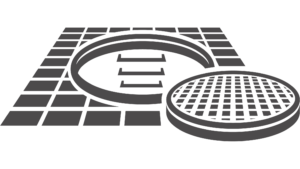
Marlex – a type of plastic used for sewer lines and other piping.
Meter pit – a chamber used to house a water meter.
Nipple – a short section of pipe with male threads on both ends, used to connect two threaded pipes.
No-hub coupling – a fitting used to connect two lengths of pipe that have different diameters or are made from different materials.
Nominal- the approximate size or inside diameters of a pipe that is used for identification.
O.D. – the outside diameter of a pipe reflecting the size of the pipe from its external end. It is usually slightly larger than the internal diameter.
Offset – a type of fitting used to connect two lengths of pipe that are not in alignment.
One-way trap – a type of trap that uses a liquid seal to prevent sewage odors from entering the home.
Pipe threads – special ridges that are used to join two pipes or other plumbing fittings together. They must be tightened enough to create a seal, but not so much that they cause stress fractures or leaks.
Plumbing codes – rules that are used to make sure that plumbing systems are installed according to safety standards.
Plumbing fittings – the pieces or joints that are used to connect one type of pipe to another, such as a thread or a union.
Potable water supply – water that is considered safe to drink and has been treated to remove any harmful contaminants. It is typically supplied by a public water system or other type of modern plumbing system.
Pressure regulator – a pressure regulator helps to control the water pressure in a home by adjusting the amount of water flowing through it.
P-trap – a type of trap that uses a liquid seal to prevent sewage odors from entering the home.
PVC – Polyvinyl chloride, a type of plastic used for sewer lines and other piping.
Rainwater leader – a pipe that conveys rainwater from a roof gutter to the ground or storm sewer.
Roof drain – a drain located at the low point of a sloped roof, used to remove water that has accumulated on the roof.
Saddle valve – a saddle valve is a type of valve that is installed on a water pipe to allow the user to easily control the flow of water.
Sanitary sewer – a system of pipes that conveys wastewater from building drains to a treatment plant or other point of disposal.
Sediment trap – a sediment trap is a device that traps the waste particles, sludge, and other sediments inside a plumbing system before it reaches the water heater or the faucets.
Septic tanks – a septic tank is a large underground container that holds sewage and wastewater. It is used in homes that are not connected to municipal sewer systems.
Sewage – wastewater that contains human waste.
Sewer – a system of pipes that conveys wastewater from building drains to a treatment plant or other point of disposal.
Sewer line – a pipe that conveys wastewater from a building drain to a public sewer or another point of disposal.
Shutoff valve – a shut-off valve is a device that stops the flow of water to a plumbing fixture or appliance. It is often used to prevent flooding in the event of a leak.
Siphon trap – a type of trap that uses a liquid seal to prevent sewage odors from entering the home.
Soil stack – a vertical pipe that conveys wastewater from toilets, sinks and other fixtures to the building sewer.
Stack – a vertical pipe that conveys wastewater from toilets, sinks and other fixtures to the building sewer.
Storm sewer – a system of pipes that conveys runoff from rain and melting snow to a natural waterway or treatment plant.
Sump – a pit used to collect water for pumping or discharge into a sewer system.
Sump pump – a device used to pump water from a sump to the sewer system or another point of disposal.
Tankless water heater – a type of water heater that heats water on demand, without the use of a storage tank.
Tee – a fitting used to connect three lengths of pipe, two of which are in alignment.
Trap – the trap is a section of pipe that curves back on itself to form a U-shape. It helps to prevent sewer odors from escaping into the home.
Vent – a pipe that conveys air into or out of a drain system, used to prevent odors and siphoning.
Vent stack – a pipe that is used to control the flow of air and gases through a plumbing system. It is usually attached to an opening on the roof or other high point of a building.
Vent systems – the piping or other components that control the flow of exhaust gases from a water heater, furnace, boiler, or other types of appliances.
Vertical stack – a vertical pipe that conveys wastewater from toilets, sinks and other fixtures to the building sewer.
Water hammer – water hammer occurs when the water flow is suddenly turned off, causing a buildup of pressure in the pipes. This can cause serious damage to plumbing fixtures and pipes if not properly addressed.
Water hammer arrestor – a device that is used to reduce the effects of water hammer, which causes pipes and fixtures to vibrate or make noise.
Water heater tank – a container that is used for holding hot water and heating it to a certain temperature. They are often made from cast iron or copper, but other materials can be used as well.
Water main – the primary water supply pipe that is located underground, typically in a street or even an alley or parking lot.
Watertight – describes a pipe or other type of container that has no leaks.
Water supply systems – water supply systems are a series of pipes that make it possible for water to be delivered from one point to another. They can include both the piping and the valves or pressure regulators that are used to control the flow of water through them.
Wye – a fitting used to connect three lengths of pipe, two of which are in alignment.